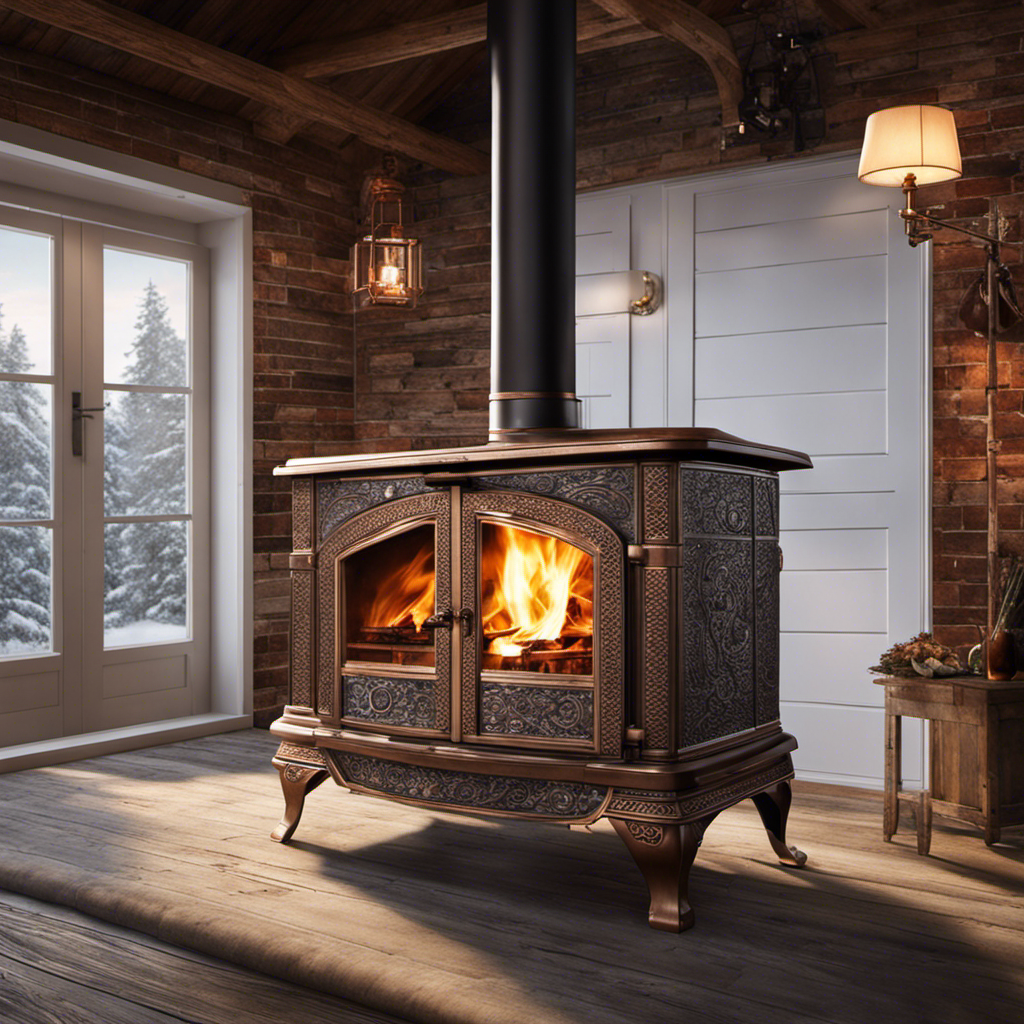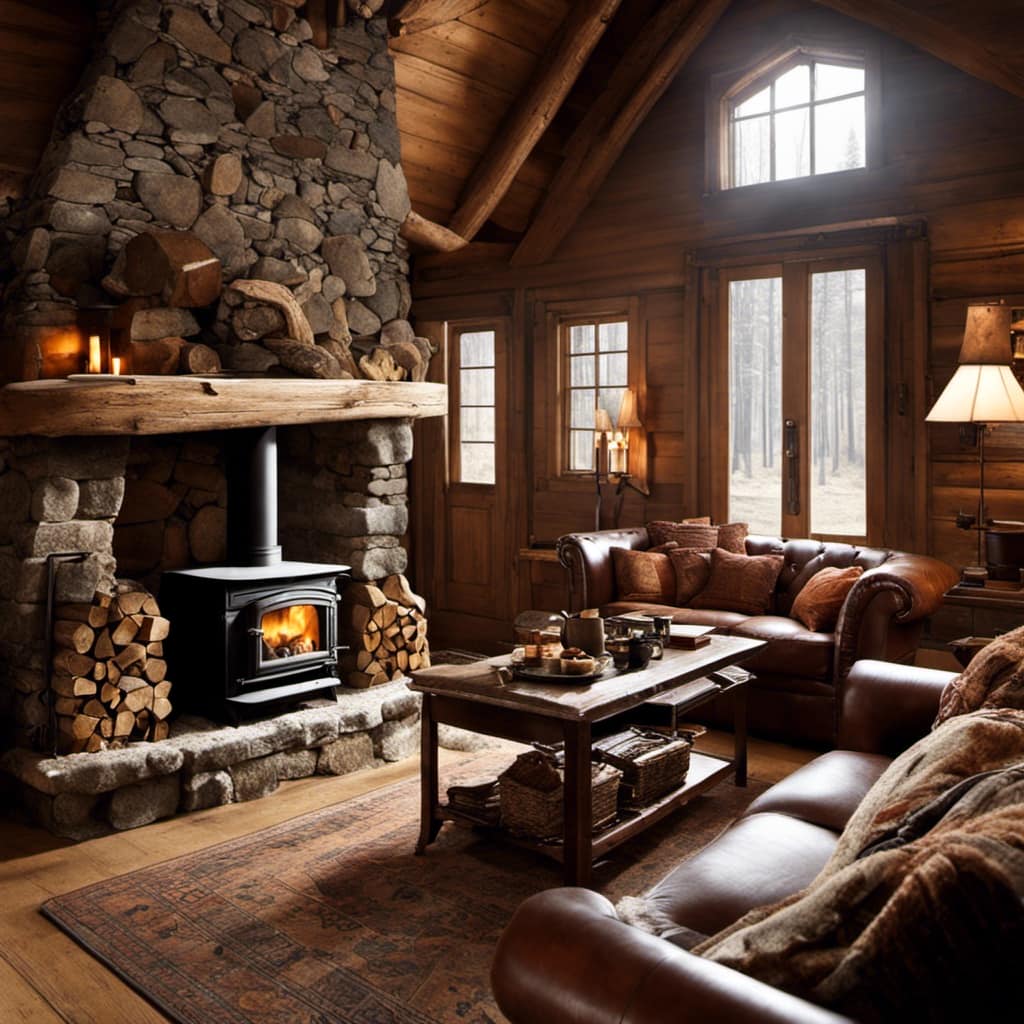
Setting up a wood stove is similar to building a cozy and welcoming hearth in your home, providing warmth and a snug atmosphere on chilly days. In this guide, I’ll lead you through the steps to install your own wood stove, including choosing the perfect location and securing the stove in place.
With a little know-how and attention to detail, you’ll soon be enjoying the crackling warmth and inviting ambiance of a wood stove in your own space.
Let’s get started!
Key Takeaways
- Choose a location for the wood stove that is safe and properly ventilated.
- Prepare the space by measuring dimensions, clearing debris, and ensuring proper ventilation.
- Install the chimney and venting system correctly, following instructions and securing it to the roof.
- Connect and secure the wood stove using appropriate materials and consult professionals to adhere to building codes.
Choosing the Right Location
I’m considering the proximity to the chimney when choosing the right location for my wood stove. Proper ventilation is crucial for wood stove installation, as it ensures the safe and efficient functioning of the appliance.

When determining the placement, I need to ensure that the stove is positioned close enough to the chimney to allow for proper venting of smoke and gases. This will prevent any potential build-up of harmful fumes in the living space.
Safety considerations are also of utmost importance when selecting the location. It’s essential to keep the stove away from flammable materials such as curtains, furniture, or walls.
Additionally, maintaining a safe distance from high-traffic areas and ensuring that there’s adequate space around the stove will reduce the risk of accidents or burns.
Preparing the Space for Installation
Clearing away any obstacles and ensuring proper ventilation are crucial steps in preparing the space for installation. Here’s what you need to do:
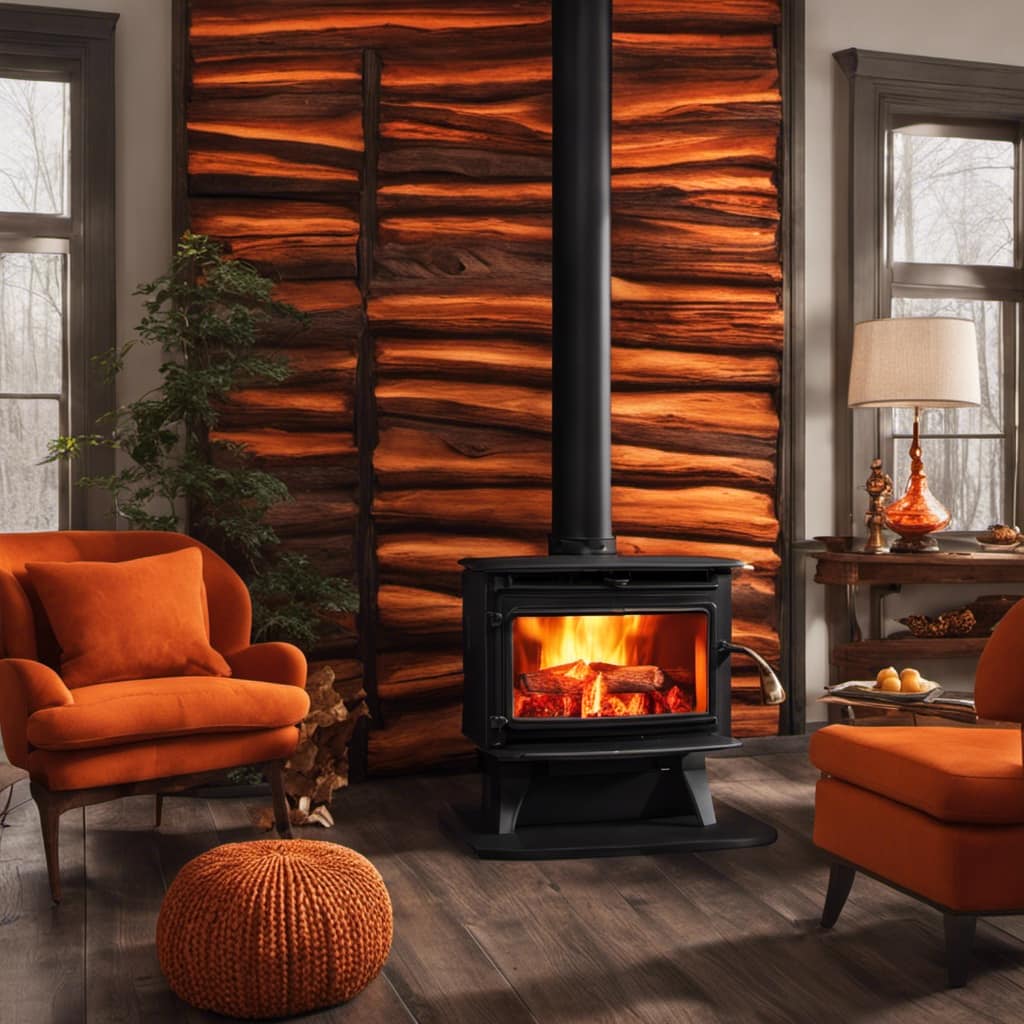
Measure dimensions: Before you begin, measure the dimensions of the space where you plan to install the wood stove. This will help you determine the size and type of stove that will fit best.
Clear debris: Remove any debris or clutter from the area where the wood stove will be placed. This includes furniture, rugs, and any other items that may obstruct the installation process. Creating a clear and open space will make the installation easier and safer.
Provide proper ventilation: Wood stoves require proper ventilation to operate efficiently and safely. Ensure that there’s a clear path for the smoke to escape, either through a chimney or a vent pipe. This will prevent the buildup of harmful gases and ensure that the stove functions optimally.
Installing the Chimney and Venting System
Securing the chimney in place and properly connecting the venting system ensures the safe and efficient operation of the wood stove. When it comes to chimney installation, there are a few key steps to follow.
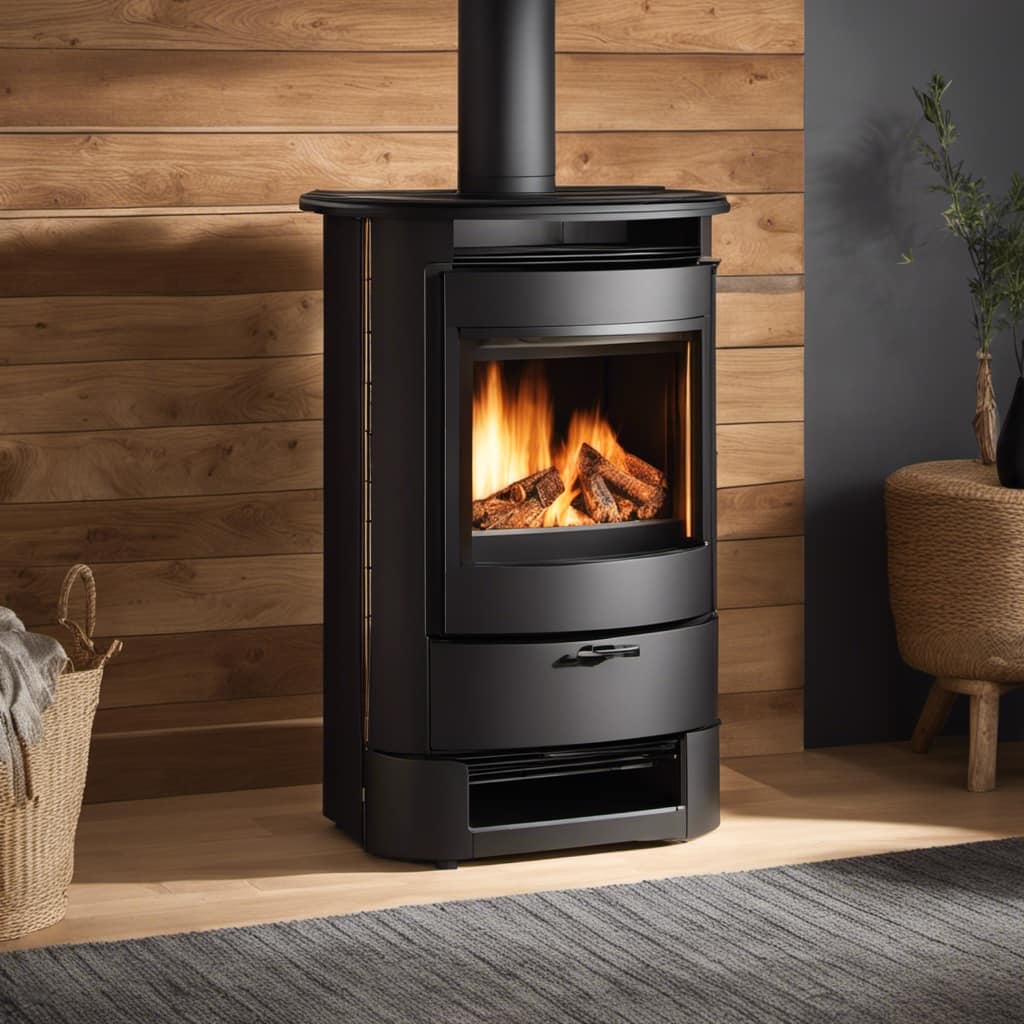
First, choose the right location for the chimney, ensuring it’s clear of any obstructions and at least three feet higher than any roof or nearby structures.
Next, assemble the chimney components, making sure to follow the manufacturer’s instructions carefully. It’s crucial to properly secure the chimney to the roof, using appropriate flashing and storm collars to prevent leaks.
Once the chimney is in place, connect the venting system to the stove, ensuring a tight and secure fit. Proper venting system troubleshooting is also important to maintain the safe operation of the wood stove. Regularly inspect the venting system for any blockages or damage, and clean it as necessary to ensure proper airflow.
Connecting and Securing the Wood Stove
After properly securing the wood stove, I connected it to the chimney using a secure and tight fitting.

When connecting a wood stove to a chimney, it’s important to follow proper safety precautions. Here are three connecting methods to ensure a safe and efficient wood stove installation:
Double-wall pipe: This type of pipe consists of an inner and outer wall, providing excellent insulation and reducing the risk of heat transfer to combustible materials. It’s easy to install and requires minimal clearance to combustibles.
Insulated chimney liner: This method involves inserting a stainless steel liner into the existing chimney. The liner provides a smooth and insulated pathway for the smoke to escape, minimizing the risk of creosote buildup and improving draft.
Masonry chimney: If you have a masonry chimney, it can be used to vent the wood stove. Ensure that the chimney is in good condition, with no cracks or damage. Install a stainless steel chimney liner for added safety and efficiency.
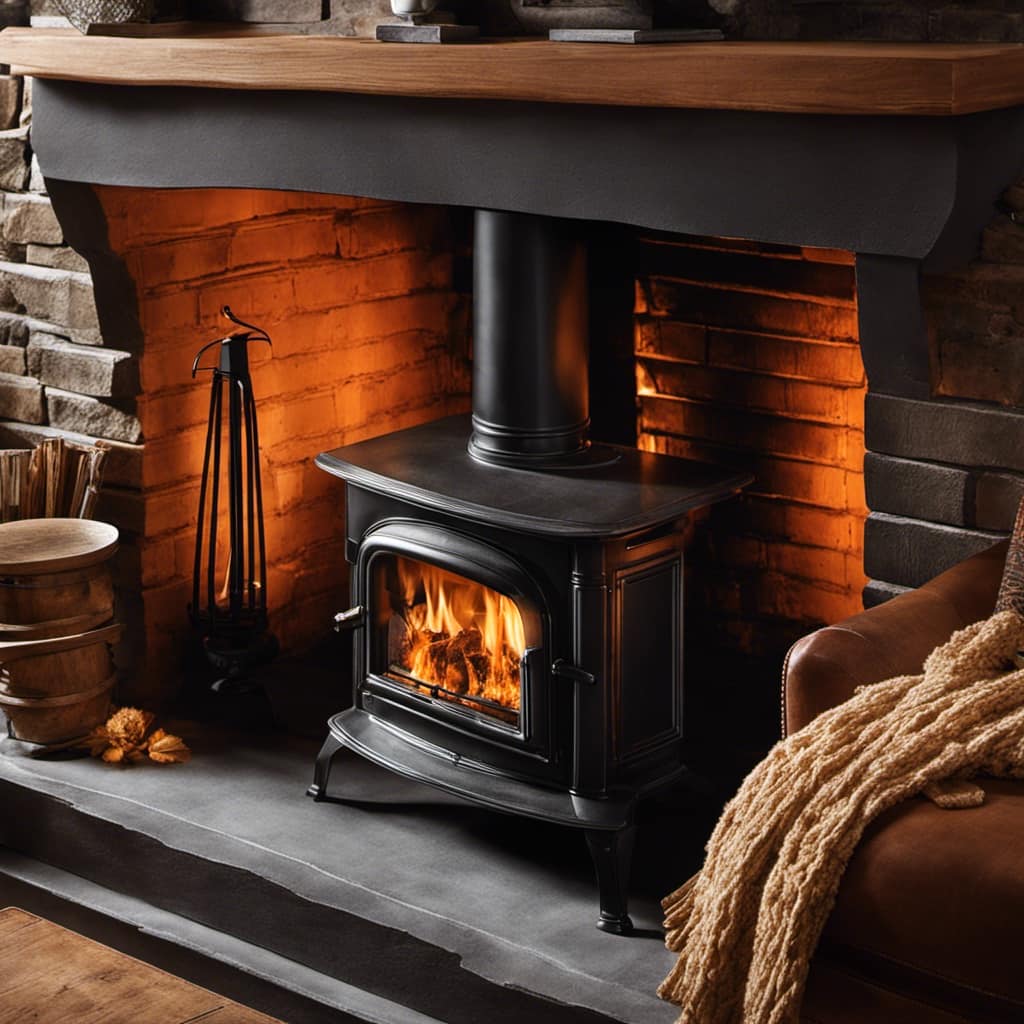
Remember to consult a professional and adhere to local building codes when connecting a wood stove to a chimney. Safety should always be the top priority to prevent fire hazards and ensure optimal performance.
Can I Use the Same Setup Method for a Cheap Wood Stove as for a Regular Wood Stove?
Yes, you can use the same setup method for a cheap wood stove as for a regular wood stove. The key is to follow the cheap wood stove tutorial guidelines and ensure you have the necessary ventilation and safety measures in place. With proper installation and maintenance, a cheap wood stove can perform just as well as a regular one.
Testing and Maintaining the Wood Stove
I regularly clean and inspect the wood stove to ensure it is functioning properly. Maintaining the wood stove is crucial for its efficiency and longevity. To troubleshoot common issues, it’s important to understand the different components of the stove and how they work together. Here is a table that provides an overview of the main parts and potential problems:
| Component | Potential Issues |
|---|---|
| Chimney | Blockage, creosote buildup |
| Firebox | Cracked bricks, damaged gasket |
| Door | Loose hinges, worn-out seal |
Frequently Asked Questions
What Are the Different Types of Wood Stoves Available in the Market?
There are various types of wood stoves available in the market. Each type has its own pros and cons. It’s important to consider factors like efficiency, size, and design when choosing the right wood stove for your needs.
How Do I Calculate the Size of Wood Stove I Need for My Space?
To calculate the size of a wood stove for my space, I measure the square footage of the area and consider the insulation. Proper wood stove installation is crucial for efficient heating and safety.

Can I Install a Wood Stove in a Mobile Home?
Yes, you can install a wood stove in a mobile home. However, it is important to adhere to mobile home regulations, such as proper ventilation and clearance requirements for safety.
Are There Any Safety Precautions I Should Take When Using a Wood Stove?
To ensure safety when using a wood stove, it’s important to take proper ventilation measures. This includes using a chimney or flue, keeping combustible materials away, and installing carbon monoxide detectors.
How Often Should I Clean My Wood Stove to Ensure Optimal Performance?
To ensure optimal performance, it’s important to clean your wood stove regularly. I find that cleaning it every 2-3 months works well for me. Here are some maintenance tips to keep your stove running smoothly.
Conclusion
As the final pieces fall into place, the wood stove stands tall and proud, ready to bring warmth and comfort to its surroundings.
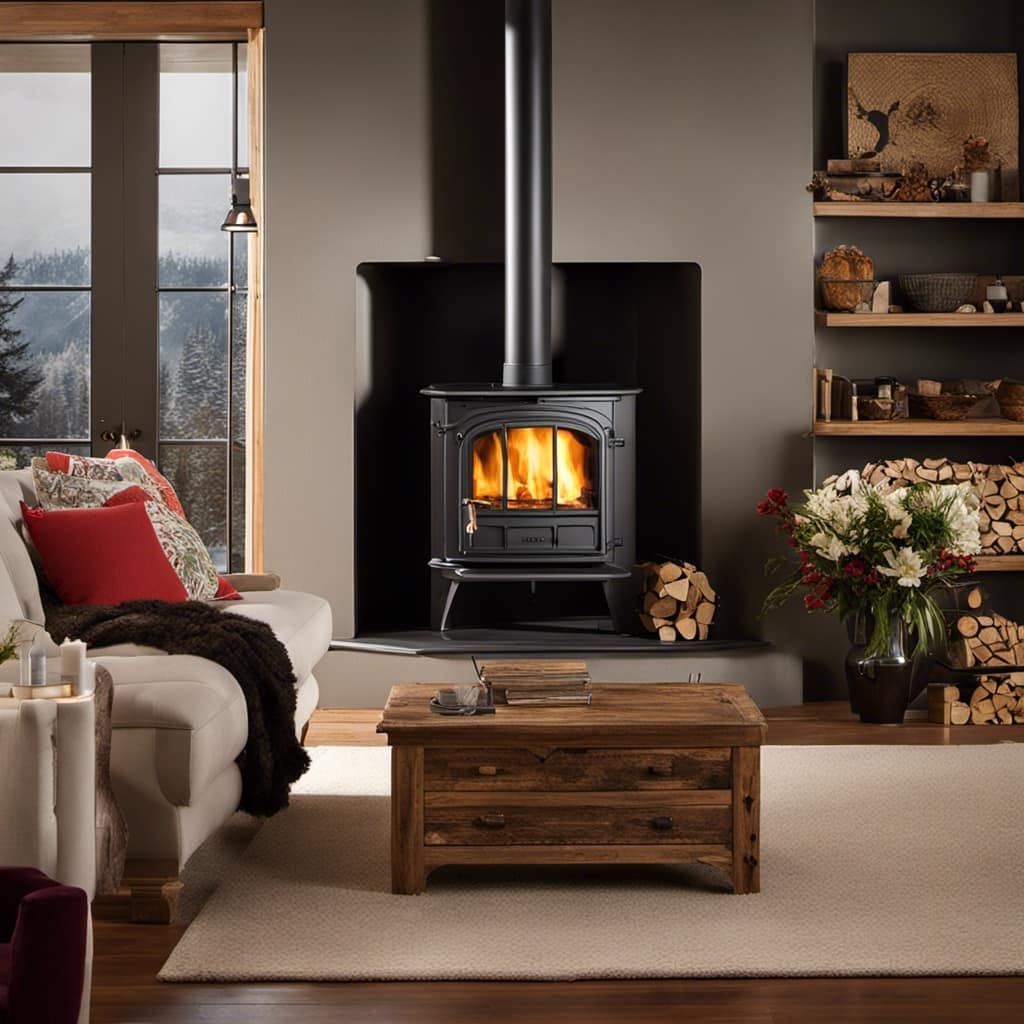
Like a loyal sentinel, it safeguards against the cold, its crackling flames a symbol of cozy nights and peaceful moments.
With proper installation and maintenance, this wood stove will become a trusted companion, providing not just heat, but a sense of home and security.
Embrace the warmth, and let the wood stove weave its magic.
Growing up surrounded by the vast beauty of nature, Sierra was always drawn to the call of the wild. While others sought the comfort of the familiar, she ventured out, embracing the unpredictable and finding stories in the heartbeat of nature.
At the epicenter of every remarkable venture lies a dynamic team—a fusion of diverse talents, visions, and passions. The essence of Best Small Wood Stoves is crafted and refined by such a trio: Sierra, Logan, and Terra. Their collective expertise has transformed the platform into a leading authority on small wood stoves, radiating warmth and knowledge in equal measure.







